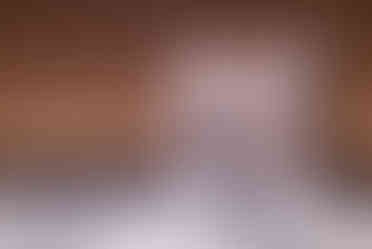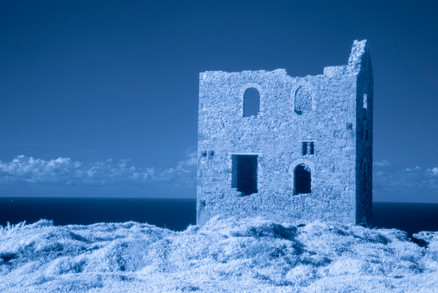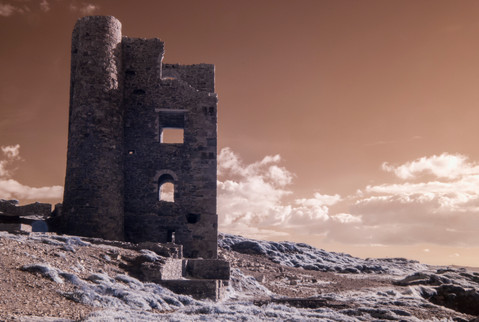Wheal Coates
- Liz Jenkin

- Jan 8, 2021
- 3 min read
One of the most photographed sites in Cornwall, the old tin mine of Wheal Coates is easily recognised by its three engine houses overlooking the sea. The area was used for mining from the late 1600s, but it wasn't until the 19th Century that the present mine was established. It ran successfully for a hundred years until the price of tin fell drastically and it was no longer economical to keep the mine running. Wheal Coates is one of a number of mining sites that are part of the Cornwall and West Devon Mining Landscape World Heritage Site and is a popular visit for tourists.

While a stunning image, this photo by Stephen Hornsey was taken from the same vantage point that hundreds of photographers stand at every year. This iconic scene has been photographed, drawn and painted thousands of times and, despite its beauty, runs the risk of becoming stale or overdone. I chose not to stand on that same spot, but rather to approach Wheal Coates from other angles. Knowing the vivid oranges and deep blacks that the sky and sea reach with an infrared camera, I wanted to incorporate these elements as much as possible.
The first image in this set struck me as particularly other-worldly. With minimal editing, the sky is so deeply pigmented and the sparse grass so cool and grey that it looks like a desert, the ruined buildings lost to heat, sand, and time. In reality, the grass and the ground were not vastly different in colour.
The second image is straight from the camera, and here I decided to continue my experiments with channel swapping in photoshop, creating the third image. The sky and sea are close to how we'd expect them to be, but the grass is washed out and yellow. This brings to mind old family photos taken on film that have faded over the decades, much like the engine houses themselves.
I used all four of my filters for these shots. I found it particularly difficult to maintain the right focus as any slight movement of the camera while changing the filter would offset the focus, and with any filter on the lens (as opposed to just the one in the camera) I cannot see through the viewfinder. I have to set up the shot as I want it while taking into consideration the warped focus as greater focal lengths, and then carefully screw the end filter on without altering the composition. My favourite image of the four is the final monochrome photo. The black void that is the sea contrasts beautifully with the white grass. It is well exposed, whereas the previous two are a little over exposed. Due to the substantially longer exposure time needed for the fourth photo, there is a little less detail in the clouds - I prefer this as the more solid clouds in images 1-3 draw the audience's eye to the left of the frame, rather than to the engine house.
To finish my collection of images from Wheal Coates, I took another set of images from the same spot using different filters. Photos 1, 2 and 3 are all different, but photo 4 is a monochrome edit of number 3. These images do not feature the sea, but instead an engine house in what looks to be a barren wasteland. While they all have their charm, the first image is my favourite by far because of the richness of the colours and the positioning of the clouds. This encapsulates my entire aim - to show Cornwall in a different light. The engine houses may be icons of Cornwall, but very few people, if any, have truly looked at them in this way. In a light that is unseen, the world becomes eerie and exciting.

























Comments